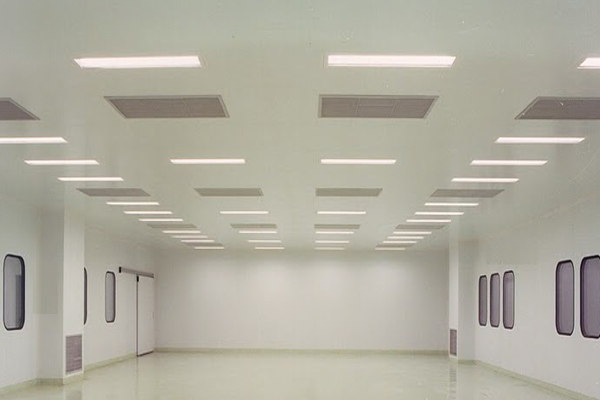The floor-to-ceiling ratio refers to the proportional relationship between a room’s height and its overall dimensions. It is a fundamental aspect of home design that affects everything from aesthetics to energy efficiency. A well-balanced ratio ensures that a space feels proportionate, comfortable, and easy to maintain in terms of heating and cooling. When this ratio is off, it can lead to inefficiencies that make climate control more difficult and expensive.
Ceiling height plays a critical role in how a home retains and distributes heat. Taller ceilings create larger air volumes, requiring more energy to maintain a comfortable temperature. In colder months, warm air rises away from the living space, while in warmer months, cooling a tall room demands increased airflow circulation. Conversely, lower ceilings naturally trap heat where it’s needed, reducing energy costs and improving comfort.
High ceilings create a sense of grandeur and openness, while lower ceilings offer a sense of coziness and improved energy efficiency. The challenge for homeowners and builders is finding a balance that enhances a home’s visual appeal while maintaining practical temperature control. Thoughtful architectural design can incorporate features such as transom windows, ceiling fans, and proper insulation to make high ceilings more energy efficient.
Heat Distribution in Different Ceiling Heights
Heat naturally moves from warm areas to cooler ones, following the principles of thermodynamics. This movement impacts how a space retains warmth in winter and stays cool in summer. High ceilings alter this process by allowing heat to rise and stay near the ceiling, often making lower sections of the room feel cooler.
The stack effect describes how warm air naturally rises within a structure. In homes with high ceilings, this can create temperature stratification, where the air near the floor remains cooler while warm air gathers near the ceiling. Managing this effect requires proper ventilation and air circulation to prevent energy inefficiencies.
Rooms with high ceilings experience uneven heat distribution, which can result in discomfort. While a thermostat may register an optimal temperature, different parts of the room may feel significantly warmer or cooler. This discrepancy often necessitates the use of ceiling fans or specialized HVAC configurations to even out temperatures.
Air movement differs depending on ceiling height. In high-ceilinged rooms, air can stagnate near the top, making it harder to regulate indoor climates. Low ceilings allow for more even circulation, ensuring that heating and cooling systems operate more effectively.
The Energy Efficiency Factor: High Ceilings vs. Low Ceilings
Higher ceilings require more energy to heat and cool, particularly in extreme climates. Without proper insulation and air circulation, maintaining comfortable temperatures can result in significantly higher utility costs.
HVAC systems in homes with high ceilings must work harder to push air throughout the space. Ductwork, vent placement, and fan usage all play essential roles in ensuring that heating and cooling reach every part of the room effectively.
Energy loss is a major concern in high-ceilinged homes. Heat rises and accumulates above the occupied space, requiring additional energy expenditure. Insulation, zoning HVAC systems, and programmable thermostats can help mitigate these challenges.
Lower ceilings naturally help trap heat at the human-occupied level, reducing reliance on heating systems and improving warmth distribution. This effect makes low ceilings a practical choice for colder climates.
A ceiling height between 8 to 10 feet often provides the best balance between spaciousness and energy efficiency. Anything higher requires additional design considerations to prevent energy waste.
Heating and Cooling Challenges in High-Ceilinged Homes
Cold air settles at lower levels while warm air rises, making tall spaces feel drafty. Solutions such as radiant floor heating and ceiling fans in reverse mode can help distribute heat evenly.
During hot months, cooling high-ceilinged rooms requires increased air circulation. Proper vent placement and ceiling fans can improve cool air distribution and reduce energy strain.
Temperature variations are common in homes with varying ceiling heights. Smart thermostats with multiple sensors can help adjust settings dynamically to improve comfort.
Higher ceilings can lead to increased humidity retention. Dehumidifiers and proper ventilation prevent moisture buildup and improve air quality.

How to Create a Comfortable, Energy-Efficient Home Without Sacrificing Style
Achieving the perfect balance between aesthetics and energy efficiency requires a strategic approach to home design. High ceilings may offer grandeur and openness, but they also pose challenges in maintaining a comfortable indoor climate. One of the key considerations is insulation—properly insulating both ceilings and walls helps reduce energy loss and keeps indoor temperatures stable.
Incorporating smart design elements, such as ceiling fans, transom windows, and energy-efficient lighting, can help regulate temperature without compromising style. Ceiling fans, for instance, enhance air circulation and can push warm air down during colder months. Similarly, using layered window treatments, such as thermal drapes or motorized blinds, allows homeowners to control heat gain or loss effectively.
Material selection plays a significant role as well. Opting for heat-reflective paints, high-performance glass for windows, and energy-efficient flooring can contribute to overall comfort. Additionally, zoning HVAC systems with programmable thermostats enables precise temperature control, reducing energy waste while maintaining a pleasant atmosphere.
By carefully selecting architectural elements and integrating energy-conscious technologies, homeowners can create an inviting space that exudes style without sacrificing comfort or efficiency.
Choosing the right ceiling height involves weighing aesthetics, comfort, and energy efficiency. Smart design choices can enhance both function and beauty.
Practical Steps to Improve Heating and Cooling in Any Ceiling Height
Creating a comfortable indoor environment requires a combination of smart design, efficient climate control, and strategic home adjustments. Regardless of ceiling height, there are several key methods to optimize heating and cooling efficiency while maintaining a balanced indoor climate.
- Use Ceiling Fans Effectively: Ceiling fans help distribute air evenly in both summer and winter. In warm months, fans should rotate counterclockwise to create a cooling breeze. In winter, reversing the direction pushes warm air downward to maintain a consistent temperature.
- Install Proper Insulation: Effective ceiling and wall insulation prevents heat loss in the winter and reduces heat gain in the summer. For high ceilings, insulating attic spaces or installing radiant barriers can make a significant difference in temperature control.
- Consider Zoning HVAC Systems: Zoning allows homeowners to heat or cool specific areas of the home without over-conditioning unoccupied spaces. This is particularly useful for homes with varying ceiling heights, as it prevents energy wastage.
- Optimize Window Treatments: Using thermal curtains, blinds, or window films helps regulate indoor temperatures by reducing heat transfer through windows. This is especially important for homes with large or high-placed windows.
- Use Smart Thermostats: Programmable thermostats allow for automated temperature adjustments, ensuring efficiency and preventing unnecessary energy consumption. Smart systems can also factor in external weather conditions to optimize indoor comfort.
- Choose Energy-Efficient Flooring: Flooring materials impact heat retention. Carpets and rugs help insulate rooms during colder months, while tile and hardwood flooring are better suited for cooler spaces.
- Leverage Passive Design Strategies: Orienting furniture to maximize natural light and ventilation can improve comfort. Additionally, positioning heat sources strategically in rooms with high ceilings helps maintain warmth near the occupied zone.

